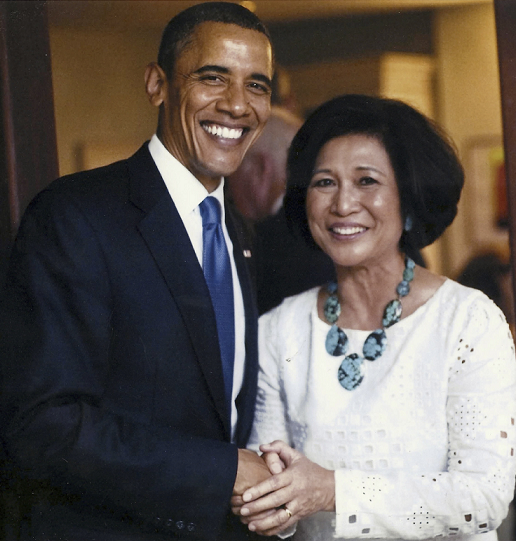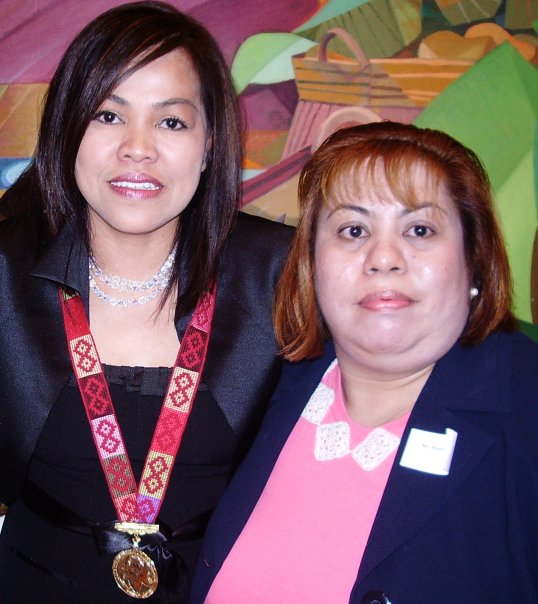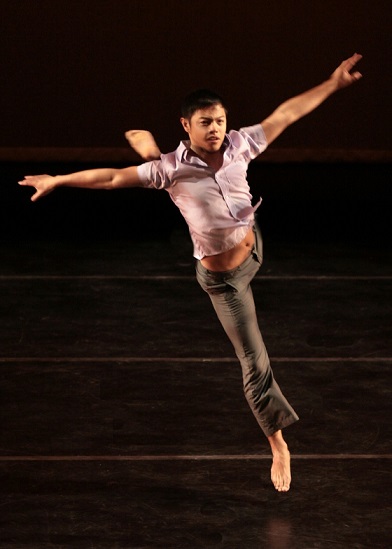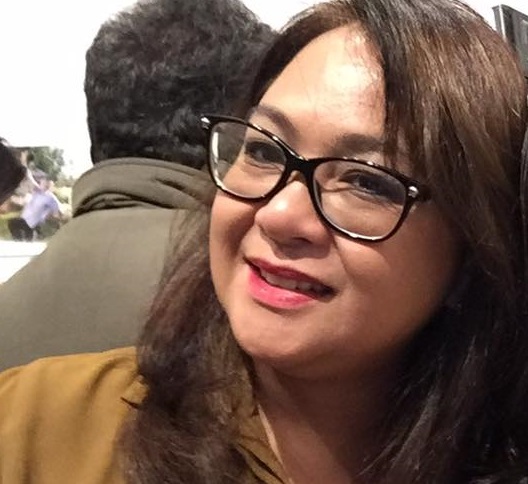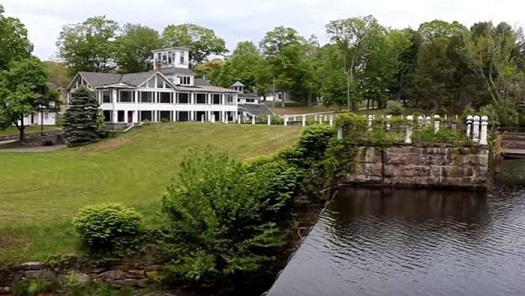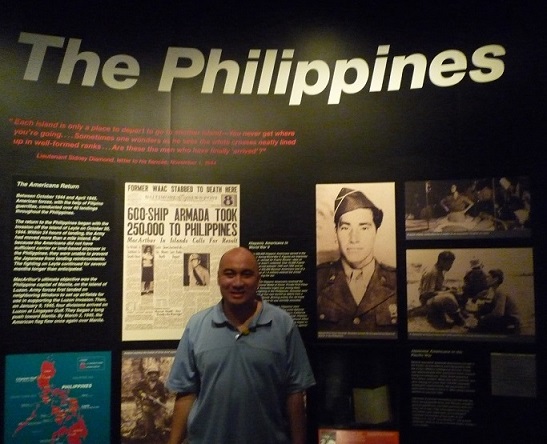Honoring the ‘Greatest Generation’ at New Orleans’s war museum
By Wendell GaaSo much has been written and talked about the Second World War, from the history books to TV to film, and many authors and celebrities seem keen on retelling this epic struggle which was the 20th century’s defining moment.
Since my high school days, I’ve been a staunch admirer of the heroism shown by the Allied leaders and soldiers, and such admiration grew from the untold ordeals my own grandparents faced during the dark era of Japanese occupation. With my ‘lolo’ on my mother’s side having been a civilian prisoner of the Japanese Army for many months in Manila, and my ‘lola’s’ three brothers having been imprisoned never to return home, no other conflict could ever be more personally compelling than World War II.
Admittedly, without the sacrifices of that gallant generation, I most certainly would not be writing this article.
My fascination about the Second World War has once again been rekindled with report that filmmaker Steven Spielberg and actor Tom Hanks — who have both produced the HBO mini-series “Band of Brothers” and “The Pacific” about the respective American military campaigns in the European and Pacific theaters of the War (I am huge fan of both series) — are collaborating again to produce a third mini-series called “Masters of the Air” about the experiences of the U.S. Air Force bombers battling Nazi Germany. So much to the point that I had to take a trip down to the World War II Museum in New Orleans, Louisiana to find out more about this episode in history.
I was truly grateful to my uncle for accompanying me to this grand museum, and I was certainly not disappointed. We drove to the museum complex which is located right at New Orleans’s Central Business District. The museum was officially opened to the public on June 6, 2000, the 56th Anniversary of the Allied D-Day invasion of Normandy, France, which was the beginning of the liberation of Western Europe from the grip of Nazi German occupation.
I wondered why this particular museum which is dedicated to commemorating the American experience during the Second World War would be established in of all places a city like New Orleans, which is a festive town much more renowned for its flamboyant jazz music and Mardi Gras revelry. I then learned that the Higgins Boats which were used by the U.S. military in landing Allied troops in Normandy on D-Day were all designed, tested, and built in New Orleans. It seems only therefore fitting that the city which produced one of the key crucial instruments to ultimate victory for the Anglo-American alliance in Western Europe would serve as the honoring hub for America’s seminal World War II museum.
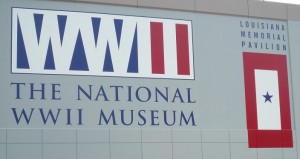 The exterior of the museum is huge. The building, which is several stories high and comprises two multi-level areas that are connected only by the main floor atrium, almost resembles an enormous aircraft hangar from the outside.
The exterior of the museum is huge. The building, which is several stories high and comprises two multi-level areas that are connected only by the main floor atrium, almost resembles an enormous aircraft hangar from the outside.
Once we entered the premises, even as we were lining up to purchase tickets, we could hear a local military corps band performing patriotic musical numbers which were popular in the U.S. during the war, such as composer Irving Berlin’s “God Bless America.” We then strolled around the museum’s galleries which exhibit historic photos and interactive multimedia documentaries on the American campaigns in the European and Pacific Theaters of the War.
The D-Day portion of the European Theater gallery was particularly fascinating and it was astonishing to see substantial amount of attention was also given to the U.S. marine and naval battles against the Japanese imperial forces in the Philippines over at the Pacific Theater section. The captions in this section told of how vital it was for the Allies to emerge victorious in our native land. Highlighted were war leaders who contributed immensely to the Philippine campaign, such as Admiral Chester Nimitz, and of course, General Douglas MacArthur.
Over at the Pearl Harbor attack photos, I was specially moved by an elderly veteran pointing his finger at a specific spot on a black-and-white photo of the damaged naval ship U.S.S. Arizona, to show his daughter where exactly he was on that fateful day of December 7, 1941.
At the U.S. Freedom Pavilion section we saw vintage planes on display, such as the B-17E Flying Fortress bomber and the P-51D Mustang warplane. Viewing the cockpits of these planes I could not help thinking what the pilots must have been through while in active combat.
After two to three hours exploring the entire museum, it was then time for us to watch the award-winning 4-D movie, “Beyond All Boundaries,” which was the highlight of the day, as this amazing film gave us an intense overview of the war on practically every front, making us feel as if we were literally flying an Allied bomber over Germany, battling Japanese kamikaze suicidal warplanes from a U.S. naval carrier, struggling against heat and bullets in a war-torn jungle in the Pacific, and even hiding from search lights in a terrifying Nazi concentration camp.
This is just the perfect end to the day’s tour, and after all is said and done, gratitude is the only thing one can offer to those fearless men and women who deserve to be called, in the words of journalist Tom Brokaw, the Greatest Generation.
———————————————————–

The chocolate for anti-aging, weight loss and energy.
For more information, click here.
 FANTASIA FLORAL DESIGN for flower orders that will Impress that special person in your life this Valentine’s Day or for any occasion. Click here to order your Valentine gifts
FANTASIA FLORAL DESIGN for flower orders that will Impress that special person in your life this Valentine’s Day or for any occasion. Click here to order your Valentine gifts


